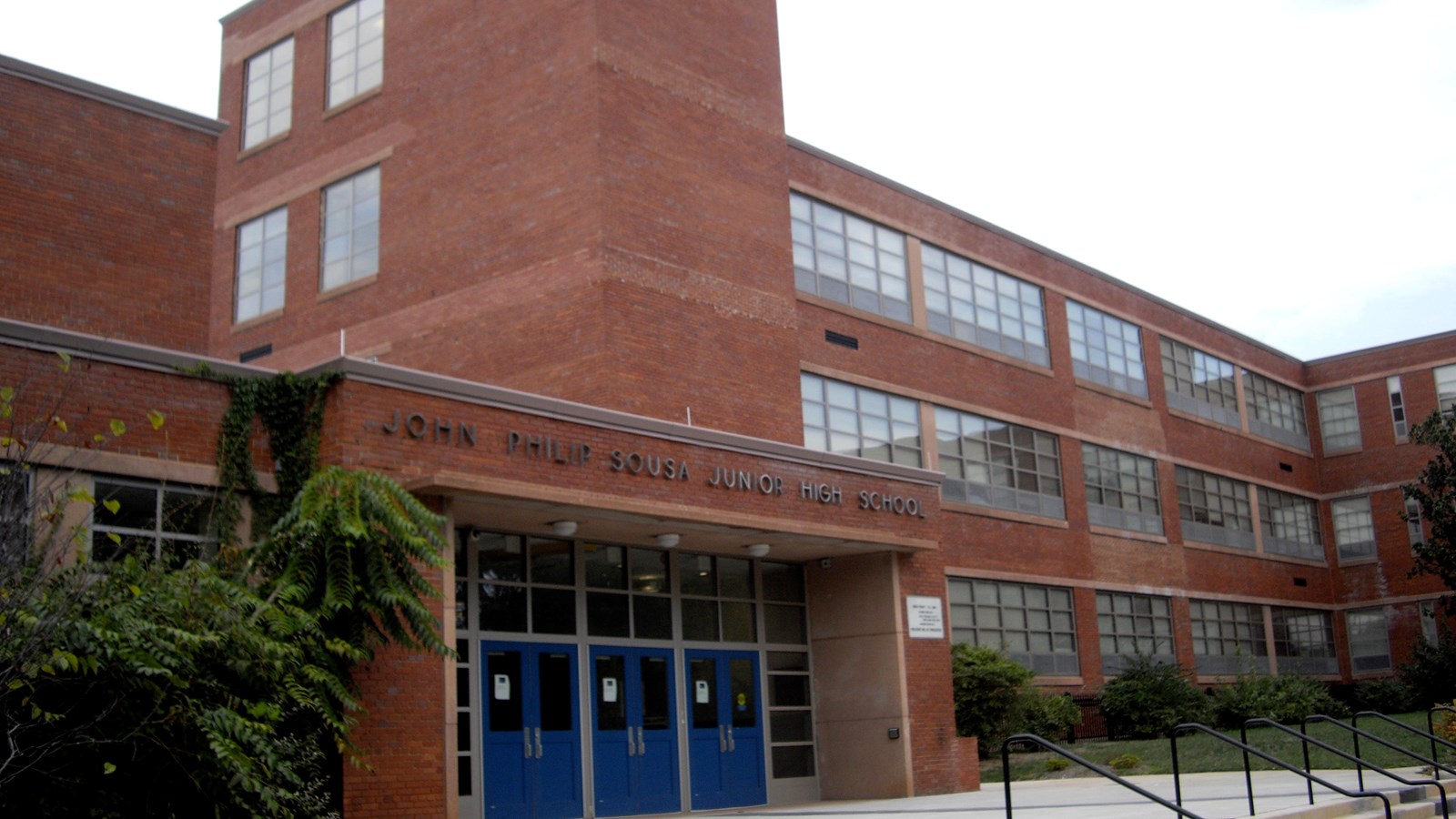Last updated: May 26, 2020
Place
Washington, D.C.: John Philip Sousa Junior High School

Photo by Dmadeo, CC BY-SA 3.0, https://commons.wikimedia.org/w/index.php?curid=4781556
The John Philip Sousa Junior High School, a National Historic Landmark, is associated with the struggle to desegregate schools in the nation's capitol. Unlike any other school system in the country, the public schools of Washington, D.C., emerged from a municipal government system that was largely dependent upon congressional support. But like other schools of the South, assignment based on race was the rule that continued up to the desegregation of the school system in 1954. In September 1950, black children were denied admission to the then all-white Sousa School in an orchestrated move to legally challenge federally segregated schools in the District of Columbia. This denial led to the court case Bolling v. Sharpe, which the U.S. Supreme Court decided the same day as the four public school segregation cases combined in Brown v. Board of Education. These cases were the basis for the landmark decision that struck down the "separate but equal" doctrine governing public policy with regard to race. The school stands as a symbol of the lengthy conflict that ultimately led to the racial desegregation of public schools by the Federal government.
Between 1930 and 1950, the black population in the District of Columbia doubled. For the first time, Federal government job opportunities for African Americans became available in the New Deal program of the 1930s, and opportunities also arose for African Americans in the service sectors and skilled markets. During this time the black student population increased from 33 percent to 50 percent. Overcrowding in black schools particularly worsened in the District as World War II halted school construction. Between 1941 and 1947 about 10 percent of the black student population went on double or even triple shifts, while white schools had rooms to spare. School administrators planned to construct new schools for the long-term, but as an immediate fix turned 21 all-white schools to all-black schools. This was resented by white parents, and also black parents who viewed the schools as "hand-me-downs."
In late 1949, a group of Anacostia neighborhood parents, the Consolidated Parents Group, joined with James Nabrit, Howard University professor of law, secretary of the University, and future president of the University to legally challenge the separate but equal doctrine. They petitioned the school board to use Sousa Junior High School on an integrated basis, as it could adequately offer Anacostia pupils a full Junior High program without additional cost for repairs or construction and serve all of the children and not be overcrowded. On September 11, 1950, in a carefully planned maneuver, the head of the Consolidated Parents' Group, along with student Spottswood Bolling and 11 other black school children, presented themselves at the brand new Sousa School for admission "with a police escort and a battery of lawyers." The principal refused to admit the children and Bolling then began his school year at Shaw Junior High, a 48-year-old school, ill-equipped, with a playground too small for a ball field, a welding shop turned into a makeshift gymnasium, and science lab with a Bunson burner and a bowl of goldfish.
Nabrit brought suit on behalf of Bolling and four other plaintiffs against C. Melvin Sharpe, president of the Board of Education of the District of Columbia. True to Nabrit's strategy, the Bolling case charged simply that segregation in itself was discrimination. The NAACP public school segregation cases before the Supreme Court took the form of one case joining similar cases from Delaware, Virginia, South Carolina, DC, and Kansas, naming it after the later case (Brown v. Board of Education) to show that the issue was not unique to the South. On May 17, 1954, the Supreme Court issued its decisions. In the Bolling decision, the court found racial segregation in the District's public schools a denial to black children of the due process of law guaranteed by the Fifth Amendment.
Visit the National Park Service We Shall Overcome travel itinerary to learn more about the civil rights movement themes and histories. Also, be sure to check out Civil Rights subject site.
